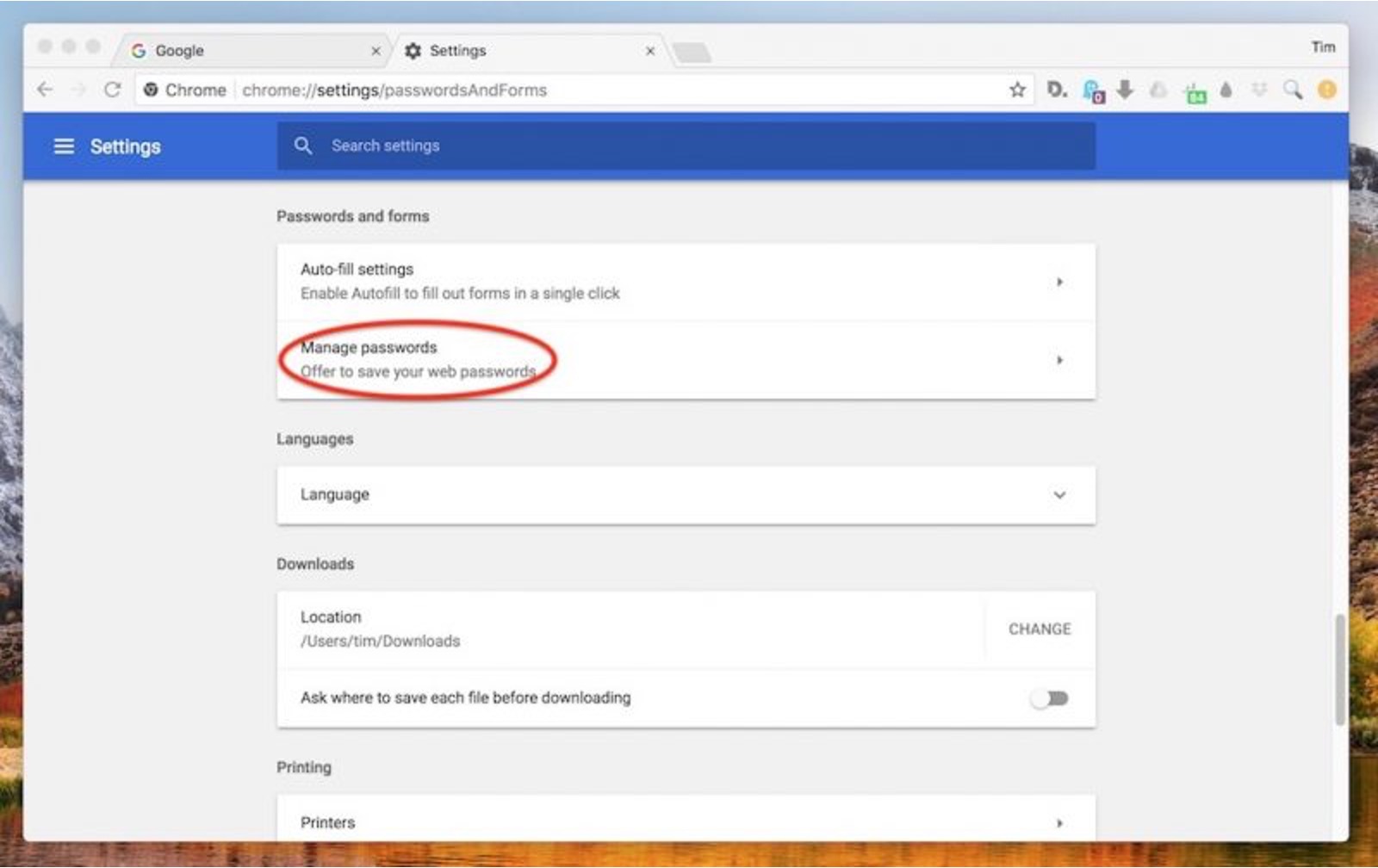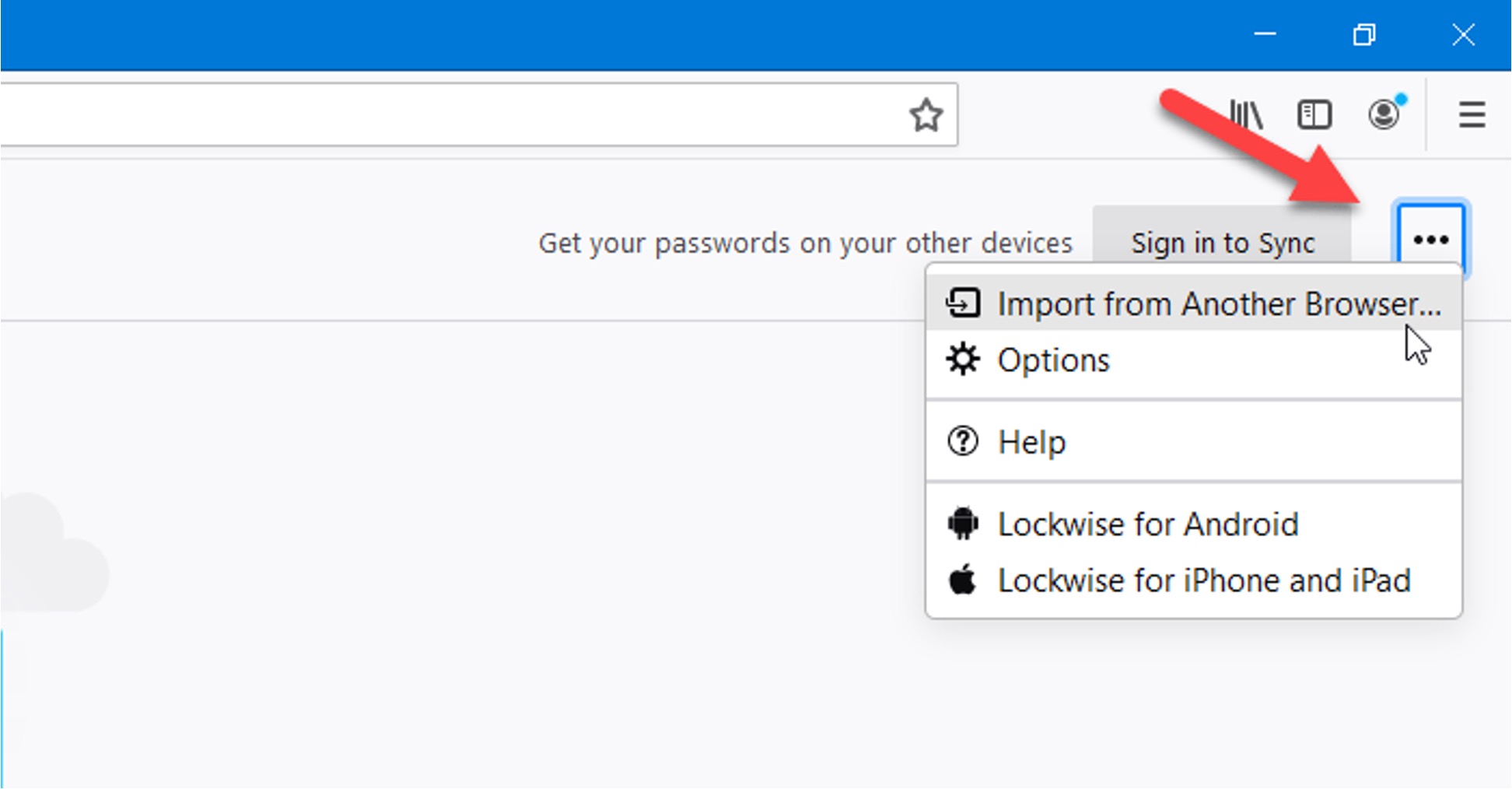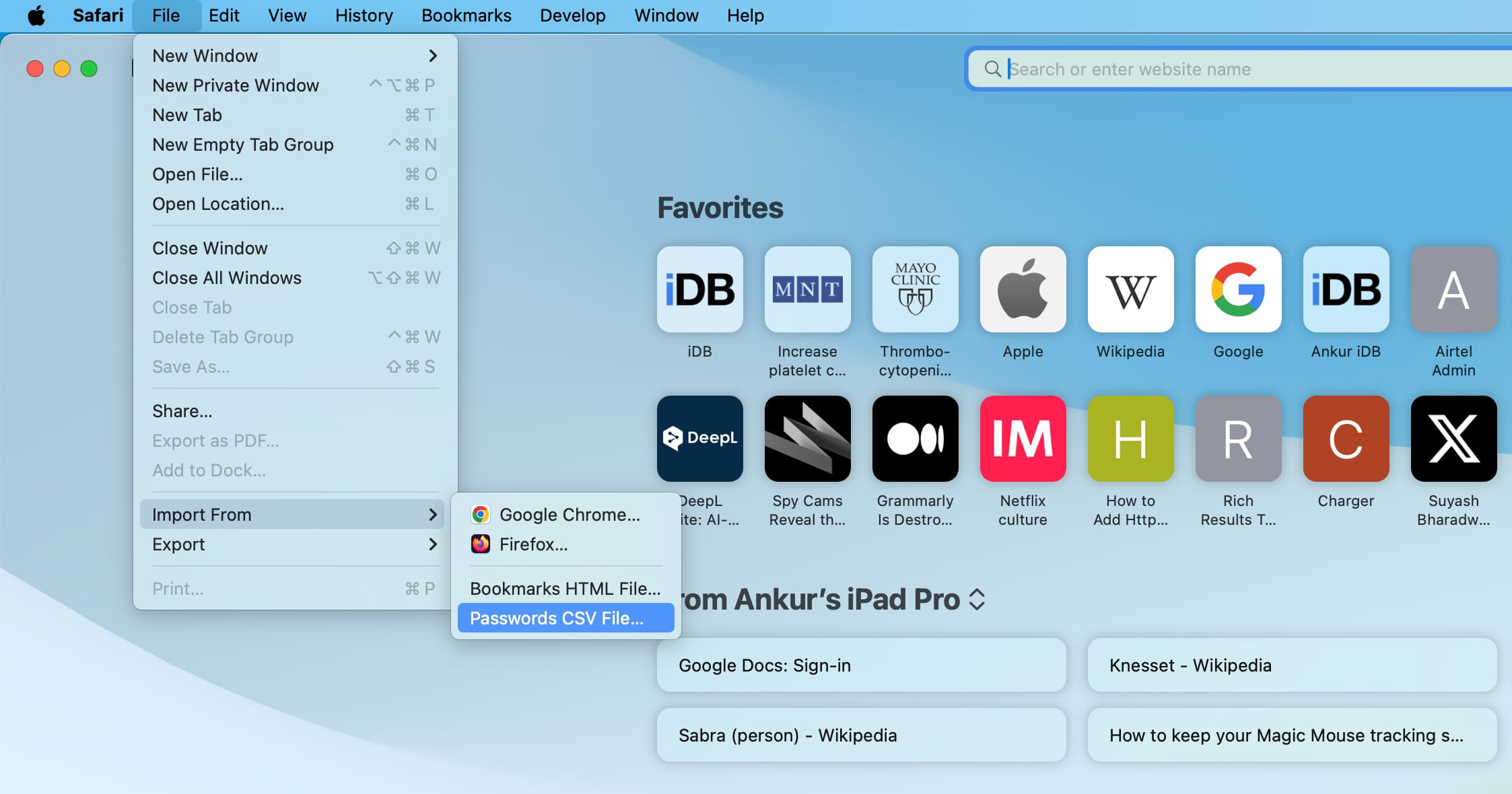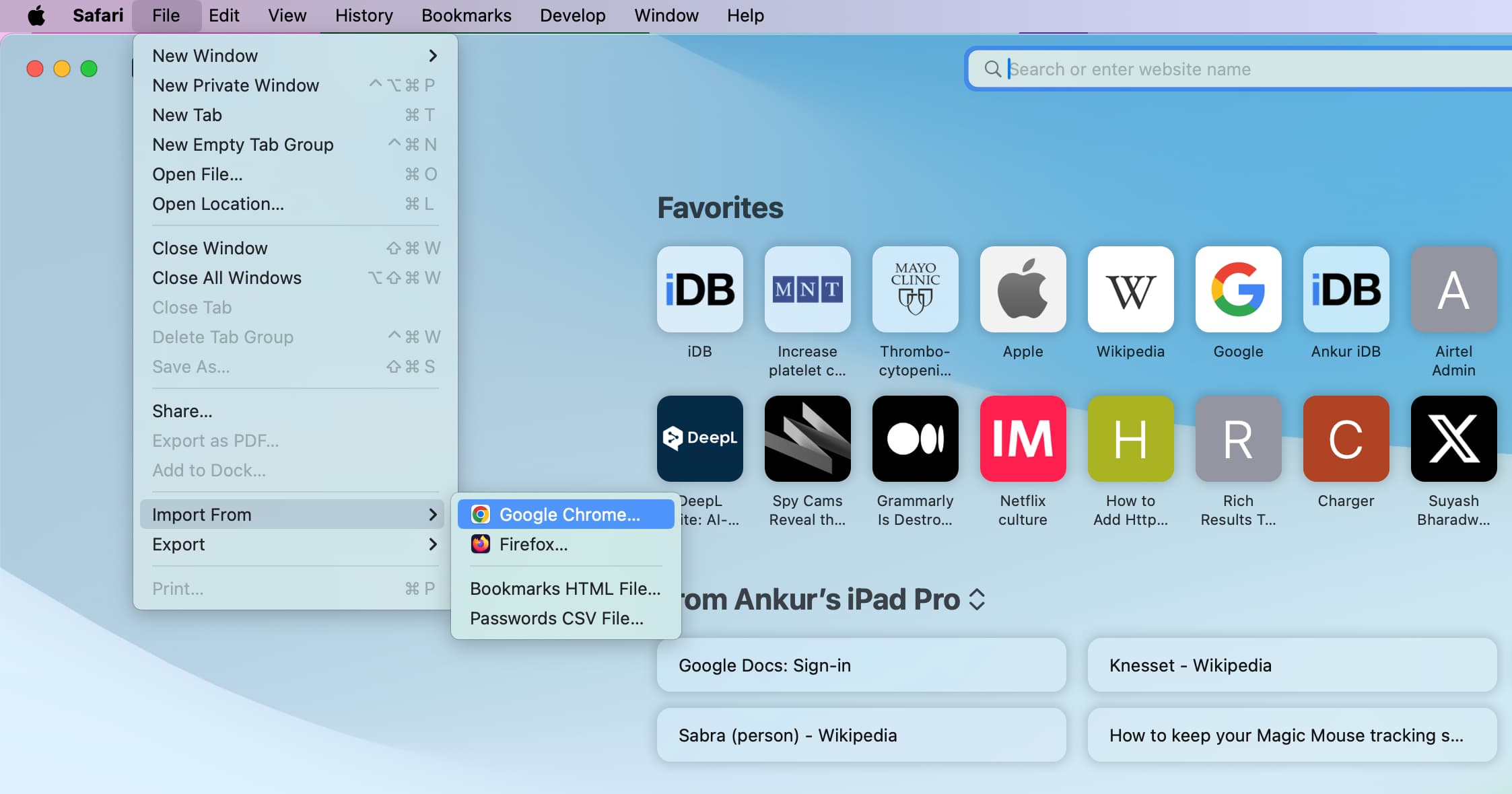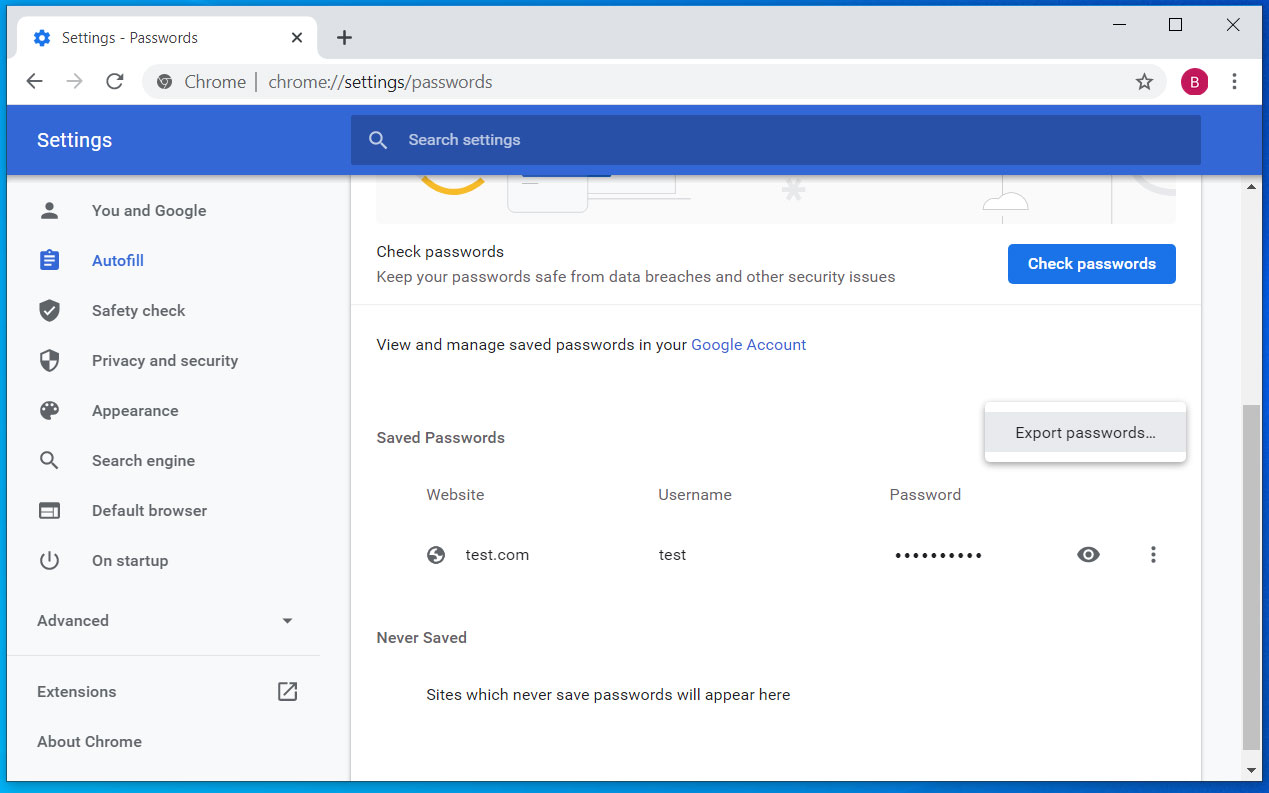Introduction
Google Chrome is one of the most popular web browsers in the world, known for its user-friendly interface and robust features. One such feature is the ability to save and manage passwords for various websites and online accounts. This functionality not only saves time but also enhances security by allowing users to create and store complex, unique passwords for different platforms.
However, there are instances when users may need to export their saved passwords from Chrome. This could be due to the desire to switch to a different browser, the need to back up passwords, or the necessity to import them into a password manager. Whatever the reason, Chrome provides a straightforward method to export passwords, ensuring that users can easily access and utilize this valuable information.
In this article, we will guide you through the process of exporting passwords from Chrome, providing step-by-step instructions to help you seamlessly accomplish this task. By following these simple yet effective steps, you can ensure that your passwords are securely exported in a format that suits your needs, thereby enabling a smooth transition or backup of your valuable login credentials.
So, whether you're exploring alternative browsers, safeguarding your passwords, or simply looking to streamline your digital security, understanding how to export passwords from Chrome is a valuable skill. Let's dive into the process and empower you to take full control of your online security.
Step 1: Open Chrome Settings
To begin the process of exporting passwords from Chrome, the first step is to access the browser's settings. This can be easily accomplished by clicking on the three-dot menu icon located in the top-right corner of the Chrome window. Upon clicking this icon, a drop-down menu will appear, presenting a range of options for customizing and managing the browser's settings.
Once the menu is displayed, navigate to the "Settings" option and click on it. This action will redirect you to the Chrome Settings page, where you can explore and modify various aspects of the browser's functionality. The Settings page serves as a centralized hub for configuring Chrome's features, including privacy and security settings, appearance customization, and advanced options for power users.
Upon reaching the Settings page, you will be presented with a comprehensive array of categories and sub-menus, each offering specific controls and preferences. This intuitive layout ensures that users can easily locate and adjust the settings that are most relevant to their browsing experience. From managing cookies and site permissions to configuring sync preferences and accessing advanced configurations, the Chrome Settings page provides a wealth of options to cater to diverse user needs.
By successfully navigating to the Chrome Settings page, you have completed the first crucial step in the process of exporting passwords from the browser. This initial action sets the stage for the subsequent steps, allowing you to seamlessly progress through the process and efficiently export your passwords in a format that aligns with your requirements.
With the Chrome Settings page now accessible, you are well-positioned to proceed to the next step in the password export process, where you will delve into the specific settings related to managing and exporting your valuable login credentials. This journey through the Chrome Settings page marks the beginning of a streamlined and user-friendly process, empowering you to take control of your passwords and ensure their secure exportation from the browser.
Next, let's move on to the subsequent step, where we will delve into the specific settings related to accessing and exporting passwords from Chrome, further advancing you toward the successful exportation of your valuable login credentials.
Step 2: Access Passwords
After successfully navigating to the Chrome Settings page, the next pivotal step in the process of exporting passwords involves accessing the specific settings related to managing and exporting login credentials. Within the Chrome Settings page, there is a dedicated section for passwords, providing users with seamless access to their saved passwords and the necessary controls for exporting them.
To access the passwords section, scroll down the Chrome Settings page until you encounter the "Autofill" category. Within this category, you will find the "Passwords" option, which serves as the gateway to your saved login credentials. Click on the "Passwords" option to proceed to the next stage of the process.
Upon clicking the "Passwords" option, you will be directed to the Passwords page, where you can view and manage all the passwords saved in your Chrome browser. This page offers a comprehensive overview of your saved passwords, displaying the associated websites or accounts, usernames, and the option to view or remove each entry.
The Passwords page also provides additional functionalities, such as the ability to edit saved passwords, enable or disable the automatic saving of passwords, and manage the security of your login credentials. This centralized hub for password management ensures that users can conveniently oversee and organize their saved passwords, enhancing both security and convenience in their online interactions.
By successfully accessing the passwords section within the Chrome Settings page, you have reached a pivotal stage in the process of exporting passwords. This accomplishment signifies your readiness to proceed to the subsequent steps, where you will delve into the specific actions required to export your passwords in a secure and accessible format.
With the passwords section now accessible, you are well-equipped to advance to the next step in the password export process, where you will explore the seamless method of exporting your valuable login credentials from Chrome. This journey through the Passwords page marks a significant milestone in your endeavor to take full control of your passwords and ensure their secure exportation from the browser.
Next, let's move on to the subsequent steps, where we will delve into the specific actions required to export passwords from Chrome, further advancing you toward the successful exportation of your valuable login credentials.
Step 3: Export Passwords
Having accessed the Passwords section within the Chrome Settings page, you are now poised to embark on the pivotal stage of exporting your valuable login credentials. Chrome simplifies this process by offering a seamless method to export passwords, ensuring that users can securely transfer their saved passwords to a format of their choice.
To initiate the password exportation process, locate the "Saved Passwords" section within the Passwords page. Here, you will find the option to export your passwords, enabling you to create a file containing all your saved login credentials. Click on the three-dot menu icon located adjacent to the "Saved Passwords" heading to reveal a dropdown menu of actions related to password management.
Within this dropdown menu, select the "Export passwords" option to trigger the commencement of the exportation process. Upon selecting this option, Chrome may prompt you to authenticate your identity, ensuring that only authorized users can export the sensitive information stored within the browser. This additional layer of security underscores Chrome's commitment to safeguarding user data and privacy.
After successfully authenticating your identity, Chrome will prompt you to choose the location and name for the exported file. This step allows you to customize the exportation process according to your preferences, ensuring that the resulting file is conveniently accessible and identifiable. Select a suitable location on your device and provide a descriptive name for the exported file, reflecting the significance of its contents.
Once the location and name for the exported file have been specified, proceed to save the file. Chrome will export your saved passwords into a file with a .csv (Comma-Separated Values) format, which is widely compatible with various password management tools and platforms. This versatile format ensures that you can seamlessly import your passwords into alternative browsers or password management applications, facilitating a smooth transition or backup of your valuable login credentials.
By following these intuitive steps, you have successfully exported your passwords from Chrome, ensuring that your valuable login credentials are securely preserved in a format that aligns with your needs. This streamlined process empowers you to take full control of your passwords, enabling seamless integration with alternative platforms and enhancing the security and accessibility of your online accounts.
With the passwords successfully exported, you are now equipped to proceed to the final step, where you will ensure the secure preservation of the exported file, thereby safeguarding your valuable login credentials for future use and reference. Let's delve into the concluding step, where you will solidify the successful exportation of your passwords from Chrome.
Step 4: Choose Export Format
After successfully initiating the exportation of passwords from Chrome, you will encounter a crucial stage where you are prompted to choose the export format for the file containing your valuable login credentials. This step allows you to tailor the exported file to a format that aligns with your specific requirements, ensuring seamless integration with alternative platforms or password management applications.
Upon selecting the option to export passwords, Chrome automatically generates a file in the .csv (Comma-Separated Values) format. This format is widely recognized for its versatility and compatibility with a diverse range of software and services, making it an ideal choice for exporting passwords from Chrome. The .csv format presents your saved passwords in a structured layout, with each entry comprising the associated website or account, username, and encrypted password.
The .csv format offers several advantages, including its widespread support across various platforms and applications. Whether you intend to import your passwords into a different web browser, a dedicated password manager, or a secure storage solution, the .csv format ensures seamless compatibility, enabling you to effortlessly integrate your exported passwords into the platform of your choice.
Furthermore, the structured nature of the .csv format facilitates easy organization and manipulation of the exported data. This allows users to efficiently manage their saved passwords, perform bulk edits or additions, and maintain a comprehensive overview of their login credentials. The inherent flexibility of the .csv format empowers users to exert full control over their exported passwords, ensuring that they can be seamlessly utilized and managed according to individual preferences.
In addition to its compatibility and flexibility, the .csv format also serves as a reliable backup solution for safeguarding your passwords. By exporting your passwords in this format, you create a portable and easily accessible file that can be securely stored across multiple devices or cloud storage platforms. This ensures that your valuable login credentials remain readily available, even in the event of unexpected browser changes or device transitions.
By choosing the .csv export format, you are effectively customizing the exported file to align with your specific needs, ensuring that your saved passwords are presented in a structured and universally compatible format. This strategic decision empowers you to seamlessly integrate your passwords into alternative platforms, maintain efficient control over your login credentials, and establish a secure backup solution for your valuable passwords.
With the export format successfully chosen, you are now prepared to proceed to the final step, where you will securely preserve the exported file, thereby ensuring the accessibility and protection of your valuable login credentials for future use and reference. Let's delve into the concluding step, where you will solidify the successful exportation of your passwords from Chrome.
Step 5: Save Exported File
After successfully exporting your passwords from Chrome in the chosen .csv format, the final step involves securely preserving the exported file to ensure the accessibility and protection of your valuable login credentials for future use and reference. This critical stage marks the culmination of the password exportation process, solidifying the seamless transition or backup of your saved passwords.
Upon completing the exportation process, Chrome will prompt you to choose the location for saving the exported file. It is essential to select a secure and easily accessible location that aligns with your data management practices. Consider storing the exported file in a designated folder on your device, ensuring that it is safeguarded against unauthorized access and remains conveniently available for future use.
Furthermore, it is advisable to implement additional security measures to protect the exported file containing your sensitive login credentials. Consider encrypting the file or applying password protection to enhance its security, thereby mitigating the risk of unauthorized access. By implementing these proactive security measures, you can fortify the protection of your exported passwords, ensuring that they remain confidential and secure.
In addition to local storage, consider leveraging cloud storage platforms or secure backup solutions to preserve the exported file. Cloud storage services offer the advantage of remote accessibility, enabling you to retrieve your exported passwords from any device with internet connectivity. This approach enhances the resilience of your password backup, ensuring that your valuable login credentials remain accessible and protected across diverse environments.
Moreover, it is prudent to establish a systematic approach for managing and updating the exported file containing your passwords. Regularly review and update the exported file to reflect any changes in your login credentials, ensuring that it remains current and accurate. By maintaining an organized and up-to-date password backup, you can streamline the management of your valuable login credentials and adapt to evolving security requirements.
By diligently saving and securing the exported file containing your passwords, you establish a robust foundation for managing and safeguarding your valuable login credentials. This proactive approach ensures that your passwords remain accessible, protected, and adaptable to your evolving digital security needs, empowering you to maintain control over your online accounts and enhance the resilience of your password management practices.
With the exported file securely saved and protected, you have successfully concluded the password exportation process, solidifying the seamless preservation of your valuable login credentials from Chrome. This strategic action empowers you to maintain efficient control over your passwords, establish a secure backup solution, and adapt to diverse digital environments with confidence and convenience.







